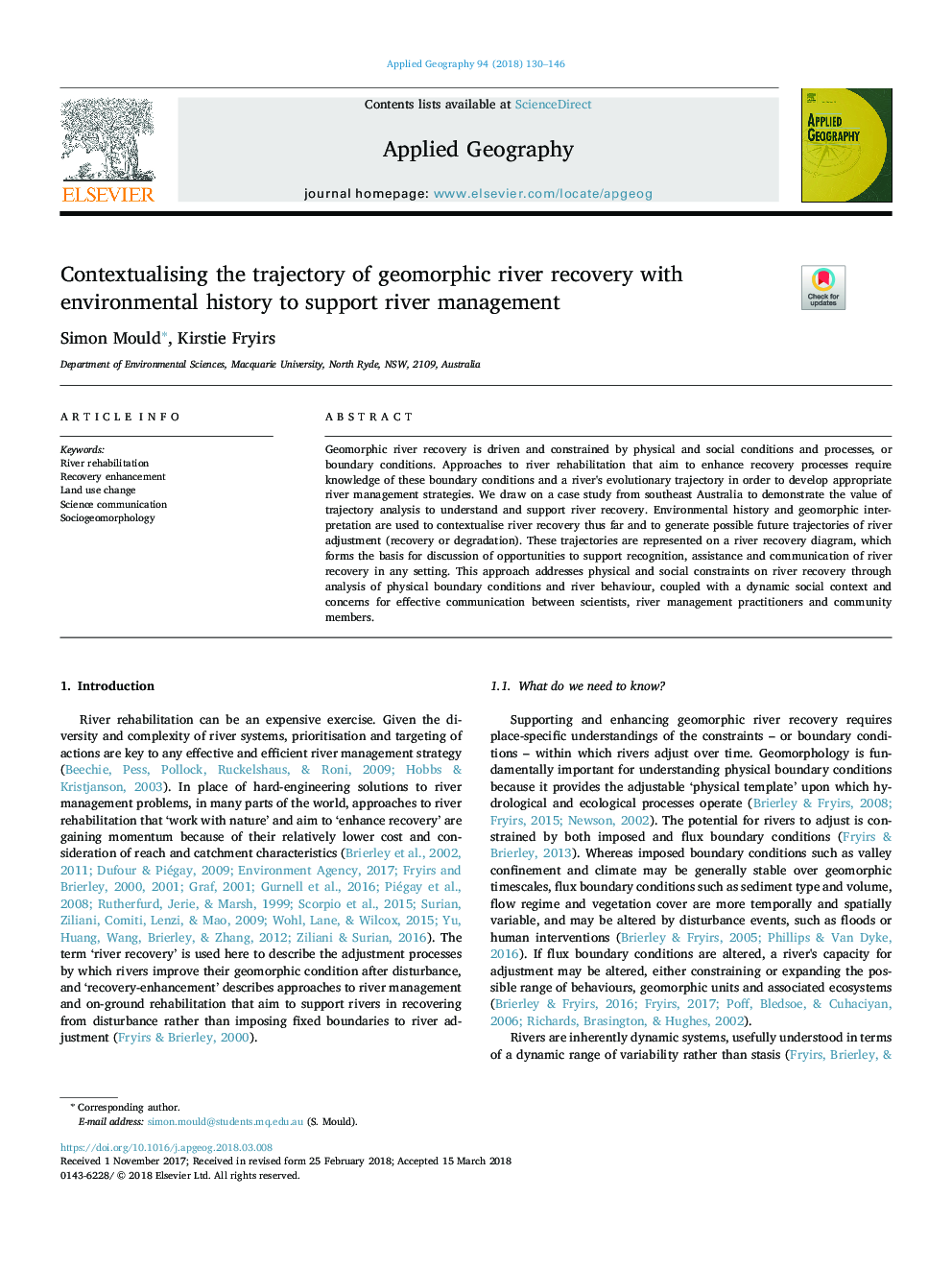| Article ID | Journal | Published Year | Pages | File Type |
|---|---|---|---|---|
| 6538282 | Applied Geography | 2018 | 17 Pages |
Abstract
Geomorphic river recovery is driven and constrained by physical and social conditions and processes, or boundary conditions. Approaches to river rehabilitation that aim to enhance recovery processes require knowledge of these boundary conditions and a river's evolutionary trajectory in order to develop appropriate river management strategies. We draw on a case study from southeast Australia to demonstrate the value of trajectory analysis to understand and support river recovery. Environmental history and geomorphic interpretation are used to contextualise river recovery thus far and to generate possible future trajectories of river adjustment (recovery or degradation). These trajectories are represented on a river recovery diagram, which forms the basis for discussion of opportunities to support recognition, assistance and communication of river recovery in any setting. This approach addresses physical and social constraints on river recovery through analysis of physical boundary conditions and river behaviour, coupled with a dynamic social context and concerns for effective communication between scientists, river management practitioners and community members.
Related Topics
Life Sciences
Agricultural and Biological Sciences
Forestry
Authors
Simon Mould, Kirstie Fryirs,
